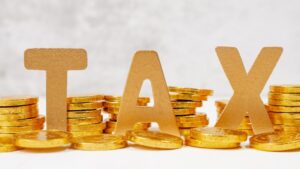Impact of GST on Different Sectors
- 2 Sep 24
- 11 mins
Impact of GST on Different Sectors
Key Takeaways
- Unified Tax System: GST replaced multiple indirect taxes, simplifying tax management for businesses.
- Sectoral Growth: Key sectors like agriculture, textiles, and IT have thrived under GST with reduced costs and increased efficiency.
- Revenue Boost: The Indian Government's annual revenue has increased by 12% post-GST implementation.
- Business Expansion: GST has fueled growth in industries like real estate and automobiles by reducing redundant taxes.
- Adaptation Required: Despite initial challenges, GST's long-term benefits are driving economic growth and tax simplification.
The Goods and Services Tax (GST) bill was finally passed on July 1 2017 after tons of debate at the Lok Sabha and Rajya Sabha Parliament. Over the years, it has turned out to be a revolutionary tax reform clubbing multiple indirect taxes previously levied on Indian businesses.
For instance, in the earlier stage, the Telecom sector was paying 14% of the tax to the governing body, but the scenario shifted after the imposition of GST. Although the rate of tax under GST is 18%, these companies have passed the tax burden on to postpaid customers. Similarly, there has been a significant GST impact on different sectors. To provide you with a brief idea, we have summarised everything in this blog.
What Is GST in India?

Goods and Services Tax is a destination-based tax. It is a comprehensive taxation method that applies to the supply of specific goods and services. It was originally introduced to avoid several other indirect taxes like excise, import and export duty, VAT and so on. The rates applicable to businesses are more or less the same. However, as there is only one tax, business operators find it easier to track their tax liabilities and thus, may effectively find ways for lawful exemptions.
Impact of GST on Different Sectors of the Economy
With its advent, the GST has brought noteworthy changes to the Indian economy. The Government has managed to earn 12% more revenue on a yearly basis. In the upcoming section, we will explore the positive GST impact on essential business sectors that serve as the foundation of the economy:
- Impact of GST on Retailers, Distributors and Manufacturing Sector
As soon as the GST came into force, the market could notice a healthy competitiveness among the retailers, distributors, manufacturing and logistics sectors. Reduced exports and slightly greater expenses were a cause of bother initially. Nevertheless, the supply chain is now relieved from various indirect taxes that were earlier imposed on distributors and manufacturers.
As a common belief, it is perceived that with the latest GST structure, the older clutter of taxes will be absent. Therefore, the retail products sector will get more chances to focus towards productivity and saving on distribution costs, thereby prospering at a much quicker rate.
- Impact of GST on Agriculture Sector
The overall effect of GST on the Indian agricultural sector is positive to date. With 16% of the country’s GDP coming from this sector, the GST rules are designed for the smooth functioning of businesses in agriculture. Streamlining crop transportation across states has been a crucial achievement of the GST protocols in agriculture. The promising signal brings hope for India to establish its National Market for agricultural products, reducing dependence on other nations for food items.
- Impact of GST on Textile Sector
While considering a comprehensive list of GST benefit sectors, one cannot simply exclude the textile industry. Dealers involved in readymade and textile pieces of garments have experienced several advantages upon the implementation of GST. For instance, they are now eligible to claim Input Tax Credit (ITC) on raw materials that would be utilised for the furtherance of business.
Apart from daily inputs, ITC is allowed for the purchase of capital goods. Finally, the distribution network now incurs lesser costs as the expenses involved in transporting supplies from one location to another have become lower compared to the previous tax system.
- Impact of GST on IT Sector
Many new factors have been introduced under GST to promote the IT sector. However, earlier the IT & ITES industry was paying 14% of the tax to the authority. Now, this sector is subjected to 18% GST to maintain tax compliance.
In return, the Government is extending help in cutting down the overall operating expenses. With the Input Tax Credit, IT companies are now able to remove the cascading of taxes.
Additionally, GST has facilitated business restructuring more simply both for traditional and e-commerce ventures. Many new software manufacturing and designing hubs have also come up that have introduced tailored GST calculating and managing tools.
- Impact of GST on Banking Sector
The costs involved in banking and financial services have gone up after GST came in. Now, banking operations attract an average of 18% GST. Earlier, the tax rates on bank services used to be 15%. Besides this, some other major changes include -
- Now, each vertical of a bank needs to hold dedicated registration to maintain legal compliance
- Companies must provide a place of supply identification
- Any form of transaction involving two separate banks would draw some fee
In addition, banks are now liable for both CGST and SGST. Like other sectors, these companies can also rely on the availability of input credits.
- Impact of GST on Hotel Services and Tourism
Within the tourism and accommodation industry, the GST rates are solely reliant on tariffs generated. Here’s a brief explanation of how the tax slab rates work as per the latest regulations published on October 1, 2019:
- For tariff ranges below ₹1,000, the establishment does not owe any GST
- Whenever the tariff lies between ₹1,000 and ₹7,500, a flat 12% GST is imposed on the service provider
- For cases when the tariff crosses the ₹7,500 mark, 18% GST is levied
The simpler categorisation makes it much easier for hotels and tour operators to provide clarity to customers. Moreover, it encourages businesses to introduce favourable schemes enhancing the state tourism and directly boosting the economic growth.
- Impact of GST on Entertainment Industry
Before GST’s introduction, many redundant taxes coexisted in the entertainment sector. Thus, the businesses had to share profits with the Central authorities, state as well as several local authorities. Now, GST has clubbed everything under one roof.
Depending on the entertainment service you are going to offer, you are liable to pay either an 18% or 28% GST rate. For instance, theatre passes, television/DTH services and movie tickets attract an 18% GST charge. Whereas, any sporting event, outdoor festivals, amusement park events, racing shows or casinos attract 28% GST.
- Impact of GST on Automobile Sector

The unified Goods and Services Tax has helped eliminate multiple taxes like Road Tax, VAT, Sales Tax and Central Excise Duty. It encouraged more people to own their private vehicles. Thus, there was an abrupt boost in automobile sales.
The GST rates on cars are segmented across 5%, 12%, 18% and 28%. Depending on the classification sold, fuel type and usage, the dealer will owe GST to the authority. To date, the automobile industry is believed to be one of the GST benefit sectors.
- Impact of GST on Export-Import Sector
Earlier, the import and export sector was administered by the Excise Duty, VAT, Customs Duty and Service Tax. Now, GST registration has covered them all. Nevertheless, the Basic Customs Duty (BCD) continues to hold a share of the import bills.
IGST comprises all the taxes that were levied on imports prior to the implementation of GST. Those taxes were Special Additional Duty (SAD) and CVD (Countervailing Duty).
When IGST was sanctioned the exports were made zero-rated under Section 16 of the IGST Act 2017. The State and the Central authorities share the duty.
- Impact of GST on the Education Sector
It is essential to build a fortified educational sector to ensure consistent growth of that country. Keeping that in mind, the GST norms have been designed to assist the academic hubs.
Under the new tax regime, all education-related establishments are excluded from taxes or duties. These even encompass services extended by educational organisations towards their faculty and staff.
- Impact of GST on Real Estate Sector
Numerous business opportunities have emerged in the real estate market over the past 5 years. As real estate prices are heavily reliant on tax rates, the advent of GST has opened avenues for newer productive ideas. Many new brands have shown their interest in contributing to existing projects. Their keenness is very promising concerning the development of the nation’s economy. Thus, the arrival of GST is perceived as a boon by most real estate enthusiasts.
- Impact of GST on Energy Sector
In any economy, the energy industry plays a massive role as it helps support daily business activities. However, giving GST concessions to the sector based on this ground could potentially disrupt the economy. Thus, the Government levies a standard GST rate of 18% from all suppliers involved in conventional energy production. In return, the companies have been able to cut some administrative costs over time.
- Impact of GST on Iron and Steel

Previously, all iron and steel manufacturers had to bear three different types of taxes:
- 2% Central Sales Tax or CST
- 5% Value Added Tax or VAT
- 12.5% Excise Duty
When you add it all up, you see that these companies were charged a total net duty of 19.5% under the previous tax system.
Contrarily, with GST implementation, now most supplies of items fall within the 12% and 18% range. Only a handful of supplies fall under the 28% category. Therefore, the iron and steel industry is surely a sector that has benefited from the GST structure.
- Impact of GST on Service Businesses
The service sector has experienced many advantages and a few disadvantages upon the arrival of GST. Their biggest challenge was to adapt to the robust modifications that called for quick actions. The changes not only impacted business support services but also the members who were involved in the process.
Talking about the positive impact, agencies providing B2B services could now evade the scenario of double taxation. Moreover, their tax liabilities were simplified for repair and maintenance work. As a result, the overall costs dropped significantly.
Most importantly, all states could now see a homogenous growth in terms of outsourcing service-providing companies and in-house agencies.
Conclusion
The impact of GST on different sectors is not alike. The sectoral growth has, however, been promising in recent years. As a result, the citizens have been able to witness an exponential growth of the Indian Gross Domestic Product.
Undoubtedly, the GST tax scheme is a complex subject and businesses have to be patient to experience its long-term advantage. Till then, consistent abidance will assist in promoting the country's economy and realising the Government's agenda of "One Nation One Tax".
💡If you want to pay your GST with Credit Card, then download Pice Business Payment App. Pice is the one stop app for paying all your business expenses.
 By
By 

















